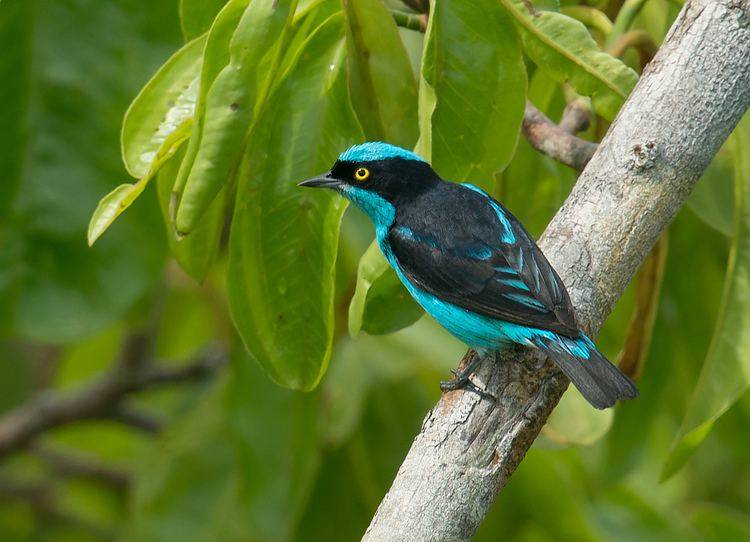

All species have a blue crown and nape with similar colored fringes on the wings.
Beautiful shades of light blue combine with black, white, and yellow in one sub-species creating a distinctive, highly attractive tree-dwelling bird.
Meet the Black-faced dacnis
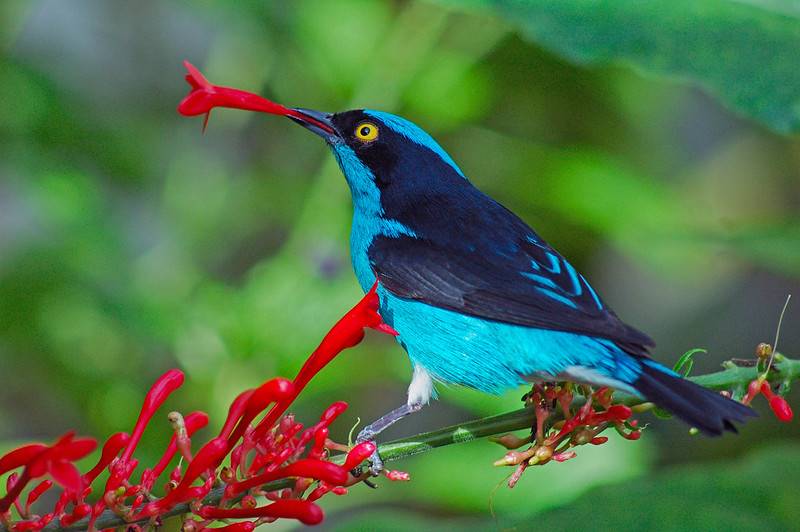
The black-faced honeydew or dacnis carinegra ( Dacnis lineata ), is a species of bird in the family Thraupidae. Males of this species are distinctive and attractive, to say the least. Mostly blue underneath, with a white belly, with one sub-species having a yellow belly instead of white.
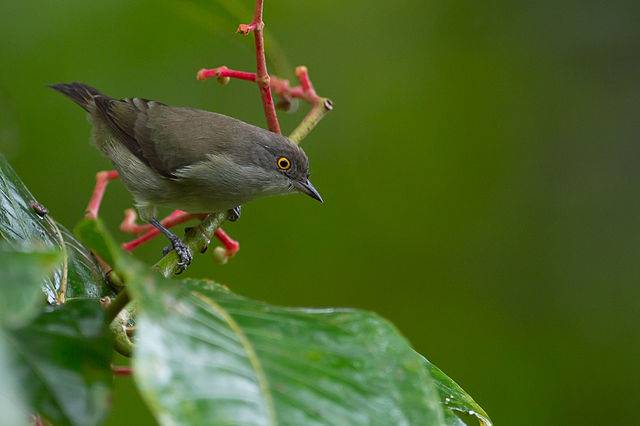
Photo Courtesy of Joao Quental – Flickr / CC BY 2.0
The female is mainly olive-green above, with a paler greyish color underneath.
These birds are found from Bolivia, north into Colombia, as well as parts of Brazil, Venezuela, Guyana, and Suriname.
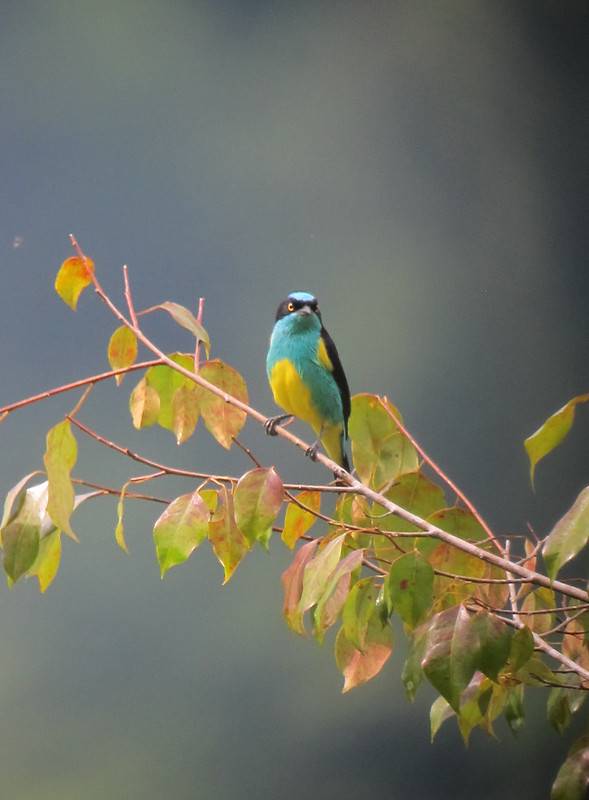
Photo Courtesy of Luis Esteves/CC BY 2.0
Yellow-bellied members are found in northwestern and central Colombia.
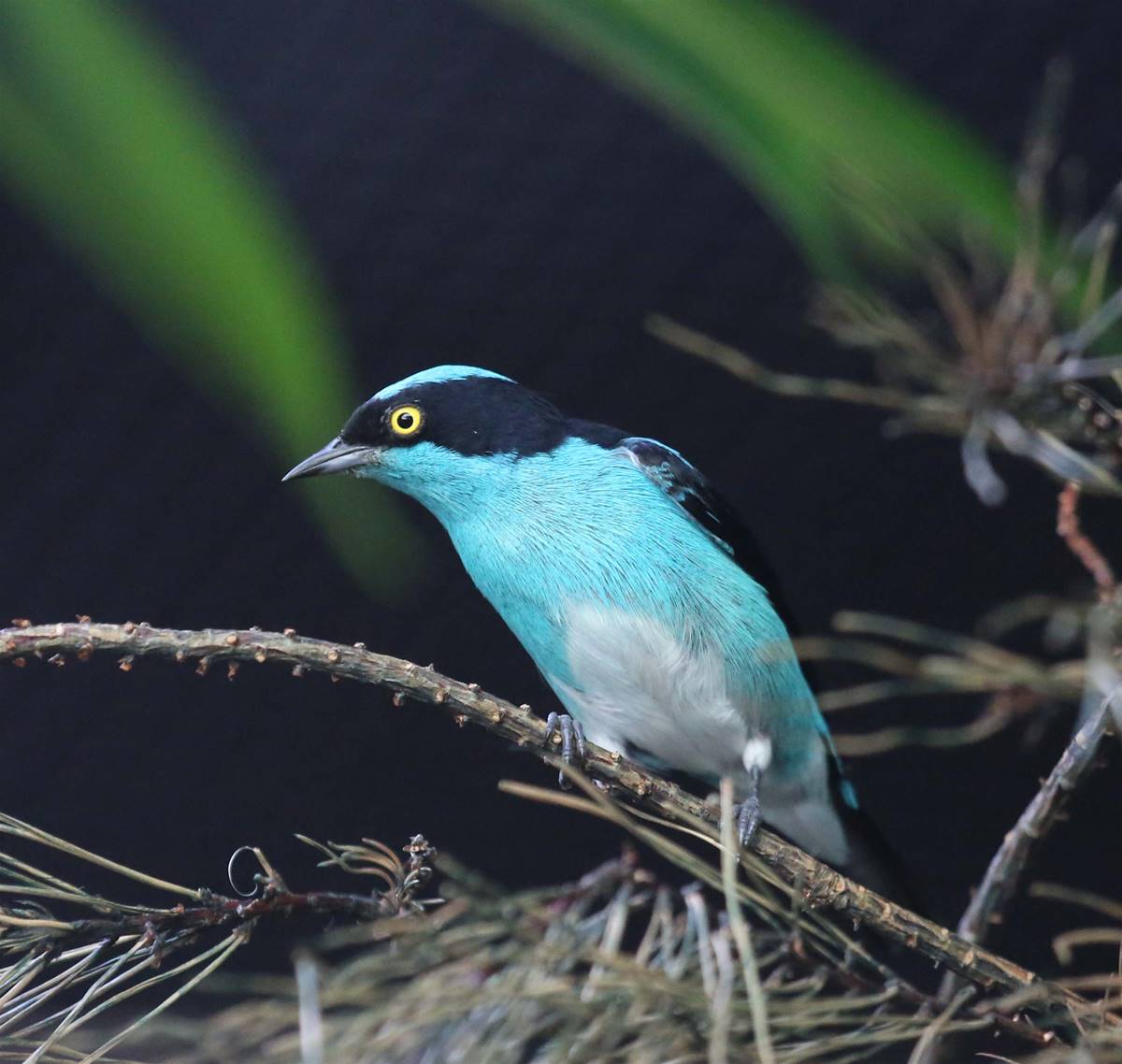
Black-faced dacnis are found in humid forested areas and flooded or swampy areas in the Amazon and Chocó-Magdalena. Here they feed on fruit, berries, seeds, and insects. Foraging for food at a height of 10 to 50 m above ground, in the upper canopy of the trees. Though they sometimes descend down, foraging for fruit in bushes.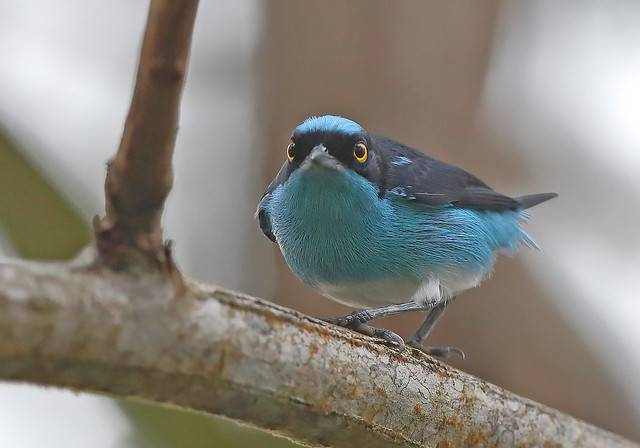
During the breeding season, both the male and female build their nest in tandem. Three to five eggs are laid which the female incubates on her own while the male keeps her well fed. Both sexes feed the young until they are fully fledged.
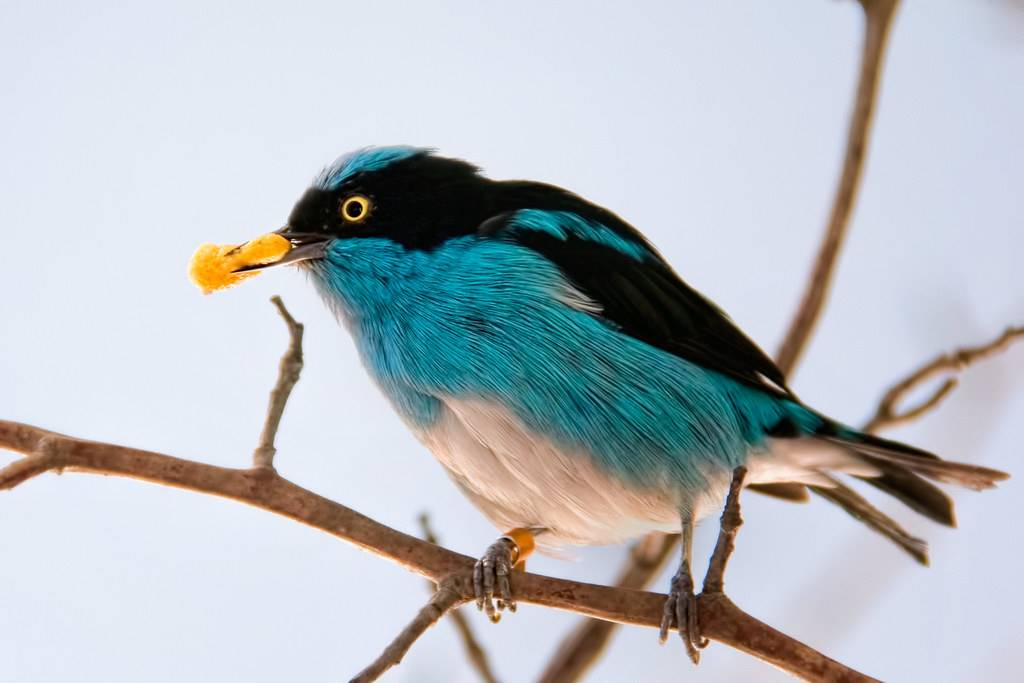
Due to its large range, this bird’s population is considered not approaching the thresholds for population decline criteria on the IUCN Red List.